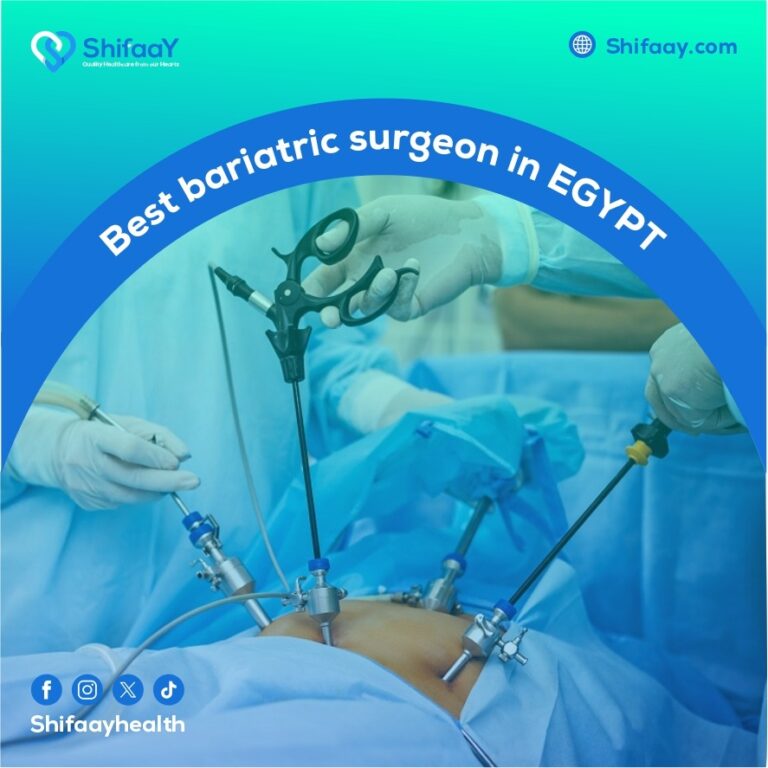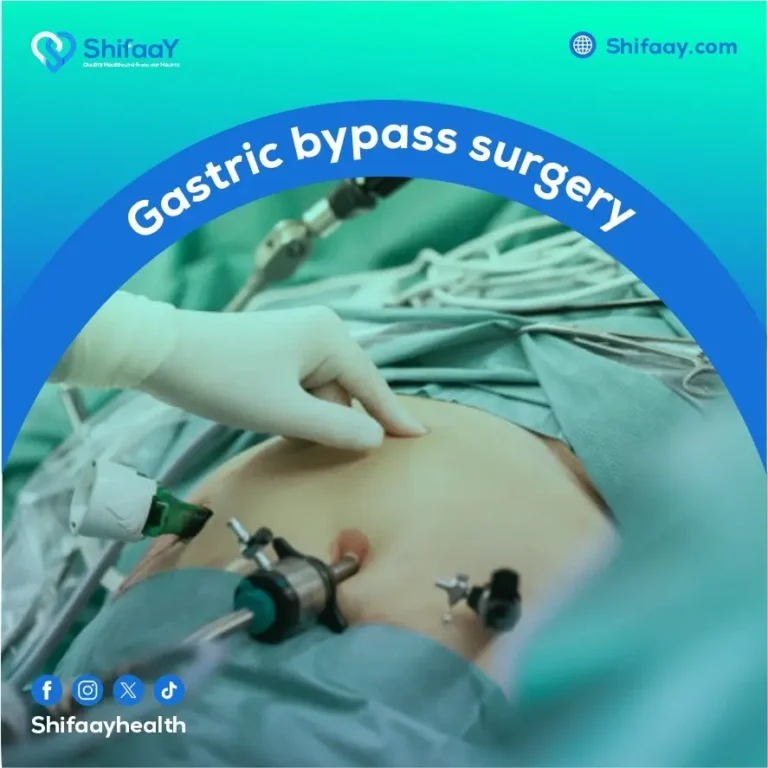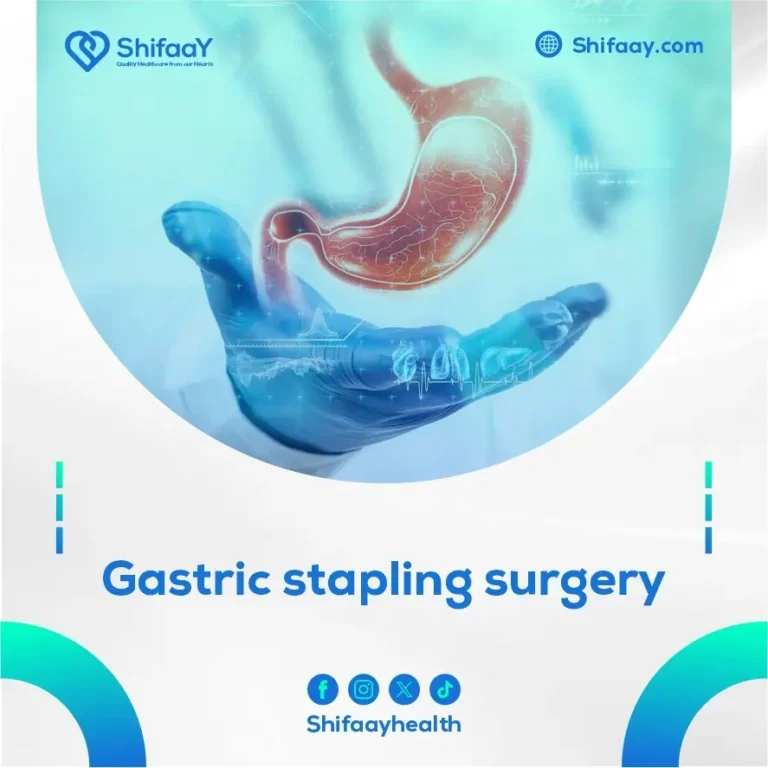Gastric Balloon Procedure
The gastric balloon procedure is a non-surgical weight loss method that is used as an effective solution for people suffering from obesity or overweight who have not achieved satisfactory results through diets or exercise. This procedure involves inserting a soft silicone balloon into the stomach through the mouth using an endoscope. The balloon is then filled with a saline solution, taking up space inside the stomach, which reduces the amount of food that can be consumed and gives a quicker feeling of fullness. This procedure typically takes 20 to 30 minutes and does not require general anesthesia, as it is usually performed under light sedation.
Therefore, gastric balloon procedures are particularly suitable for individuals with an inappropriate body mass index (BMI) who have not been able to lose weight through traditional methods. It can also be used as a preparatory step before more complex surgeries, such as sleeve gastrectomy or gastric bypass, as it helps reduce surgery risks by shedding some excess weight. It is important that the patient’s health condition is evaluated before undergoing the procedure to ensure there are no medical contraindications.
The gastric balloon procedure is carried out under the supervision of a specialist physician, who must have sufficient experience in this type of procedure. After the balloon is inserted, the patient follows up with a nutritionist to establish a healthy diet plan that helps achieve the best results. The success of the gastric balloon procedure does not only rely on the procedure itself but also on the patient’s commitment to lifestyle changes, making it an effective tool within a comprehensive weight loss plan.
Steps for the Gastric Balloon Procedure
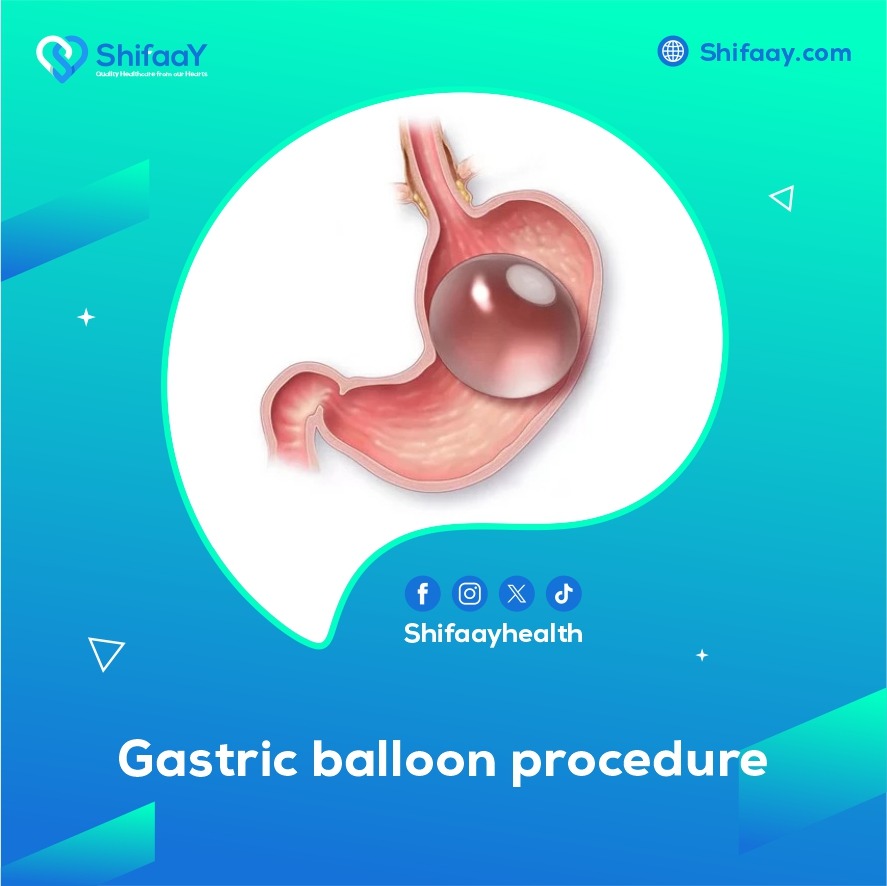
The gastric balloon procedure is a non-surgical intervention that many people turn to as an effective solution for weight loss, especially for those who have not succeeded in losing weight through diet and exercise alone. This procedure helps reduce the amount of food consumed by placing a balloon inside the stomach, which gives a quicker feeling of fullness. It is performed in a short time within a clinic or hospital without requiring a long stay. The steps for the gastric balloon procedure require precise preparation to ensure effective and safe results for the patient.
First: Evaluation and Medical Preparation
The process of the gastric balloon procedure begins with a medical consultation, where the patient is examined to ensure they are suitable for this type of procedure. The doctor performs a comprehensive evaluation, including the medical history, laboratory tests, and sometimes imaging or an endoscopy, to ensure there are no contraindications that might affect the safety of the procedure. Once suitability is confirmed, the patient is instructed to refrain from eating or drinking for a certain period before the procedure.
Second: Performing the Procedure and Placing the Balloon
The balloon is inserted into the stomach through the mouth using a precise medical endoscope, without the need for surgical intervention. Once the balloon reaches the stomach, it is filled with a sterile saline solution or gas to take up the appropriate size, reducing the stomach’s capacity for food. This step usually takes between 15 to 30 minutes, and the patient is under light sedation or local anesthesia.
Third: Post-Procedure Follow-up and Instructions
After the gastric balloon procedure, the patient is transferred to a monitoring room for a short period to ensure their condition stabilizes. The patient receives detailed instructions regarding the diet and daily activities and is given a schedule for periodic follow-up visits. This stage is crucial for ensuring the success of the gastric balloon procedure and achieving the desired weight loss in a safe and controlled manner.
Read also: Duodenal Bypass Surgery
Diet After Gastric Balloon Procedure
The diet after a gastric balloon procedure is one of the most important factors that determine the success or failure of the results. It helps promote healthy and safe weight loss. After the gastric balloon procedure, the body needs a gradual period of adjustment to the new changes inside the stomach. Therefore, adhering to a well-structured dietary plan is essential to avoid complications and achieve the best results from the gastric balloon procedure. Proper nutrition is just as important as the medical procedure itself, as it forms the true foundation for maintaining results over the long term.
Reasons for the Importance of Following a Diet After the Gastric Balloon Procedure:
- Reducing pressure on the stomach during the initial period after the procedure to avoid nausea and discomfort.
- Facilitating adaptation to the presence of the balloon by consuming small amounts of food and chewing it well.
- Preventing stomach dilation that could lead to balloon failure due to consuming unsuitable foods.
- Supporting safe weight loss by reducing calories and focusing on essential nutrients.
- Preventing potential complications such as acidity or constipation through a balanced diet free from harmful fats.
The diet after the gastric balloon procedure starts in clear stages. Initially, only clear liquids are consumed for the first two days, followed by a gradual transition to thicker liquids like soups, then pureed foods, and finally low-calorie solid foods. Each stage aims to train the stomach to accommodate smaller amounts of food, with an emphasis on proteins and vegetables while reducing carbohydrates. Adhering to these stages contributes to the success of the gastric balloon procedure and achieving sustainable results without negatively affecting overall health.
Types of Gastric Balloons
There are various types of gastric balloons based on design, duration inside the body, and method of insertion. They are among the most popular modern methods used to assist in weight loss without surgery. They are suitable for individuals with excess weight who have not succeeded with traditional methods. The gastric balloon procedure aims to temporarily reduce the size of the stomach, thus reducing the amount of food consumed daily. Some of the most common types of gastric balloons used worldwide are:
Removable Gastric Balloon After 6 Months
This is the most common type and is inserted through endoscopy under mild sedation. It is then filled with saline solution inside the stomach and remains for six months before being removed in the same way. It is known for its ease of insertion and quick effectiveness, and the patient can return to their normal life a few days after the procedure. This type is recommended for those who wish to lose a moderate amount of weight in a relatively short period without resorting to surgery.
Self-Swallowable Gastric Balloon
This is one of the newer types of gastric balloons. A capsule containing the balloon is swallowed without the need for an endoscope or anesthesia. It is then filled with liquid via a thin tube. The tube dissolves automatically after filling, and the balloon stays in the stomach for about 16 weeks before it dissolves and exits naturally. This type is known for its ease of use and quick procedure, and many patients prefer it to reduce time and costs compared to other types of gastric balloon procedures.
Gastric Balloon Procedure: Benefits and Drawbacks
The gastric balloon procedure is one of the most prominent non-surgical interventions sought by many individuals to achieve effective weight loss without the need for surgery. It is part of a range of gastric balloon procedures that have become popular recently due to their rapid results and relative effectiveness. The balloon concept involves inserting the balloon into the stomach through the mouth, and then filling it with either liquid or gas, occupying space that reduces the amount of food one can consume, which helps induce a feeling of fullness quickly. This solution is ideal for those suffering from moderate obesity who do not wish to undergo surgery. Below, we will outline some of the benefits and drawbacks:
Benefits of the Gastric Balloon:
- The gastric balloon procedure does not require any surgical intervention, reducing potential risks and complications.
- The procedure and recovery time are short, and normal activity can be resumed within a few days.
- It enhances the feeling of fullness and reduces appetite, which helps with gradual and safe weight loss.
- It is a suitable option for individuals who have not achieved results through dieting or exercise.
- It can be easily removed once the usage period ends, with no permanent damage.
Drawbacks of the Gastric Balloon:
- Some patients experience nausea or vomiting during the initial days after balloon insertion due to the stomach adjusting to it.
- Gastric balloon procedures do not provide a permanent solution, as weight may return after the balloon is removed if a healthy lifestyle is not maintained.
- Rare complications may occur, such as balloon rupture or displacement inside the digestive system, requiring medical intervention.
- Regular follow-up with a specialist is needed to ensure the balloon’s effectiveness and safety during its time in the stomach.
Reasons for Gastric Balloon Failure
The gastric balloon procedure is an effective weight loss solution, but in some cases, it fails to achieve the desired results due to several factors that can be avoided with awareness and careful follow-up. Knowing these reasons helps improve the chances of success for the gastric balloon procedure and maintain the results.
- Non-compliance with a healthy diet after the gastric balloon procedure is the most common and primary reason for failure, as consuming high-calorie foods or failing to control portion sizes can lead to stomach expansion and weight regain.
- Lack of physical activity and failure to engage in exercise significantly affect the results of the gastric balloon procedure, as the body needs continuous stimulation to burn fat after the balloon is inserted.
- Technical complications, such as balloon displacement or leakage inside the stomach, lead to the need for early removal, causing the procedure to fail and not achieve the desired weight loss.
- Strong side effects, such as persistent nausea and vomiting, lead some patients to reject continuing the treatment, resulting in gastric balloon failure and not reaching the goals.
- Lack of regular follow-up with the doctor negatively impacts the success of the gastric balloon procedure, as periodic visits ensure the treatment plan is adjusted as needed.
- Psychological factors, such as losing control over appetite or having mental disorders that lead to overeating, limit the effectiveness of the gastric balloon procedure and increase the likelihood of failure.
- Not selecting suitable patients for the gastric balloon procedure, particularly those with chronic illnesses or health issues that impact the procedure’s results, is a key reason for failure.
Read aslo: What is Chronic Venous Insufficiency?
Price of Gastric Balloon Procedure in Egypt
The prices of the gastric balloon procedure in Egypt vary depending on several factors, the most notable of which are the type of balloon used, the expertise of the best obesity surgery doctor in Egypt, and the hospital or medical center where the procedure is performed. In general, the price of the gastric balloon procedure in Egypt ranges between 25,000 to 55,000 Egyptian pounds. This cost may increase if the procedure is part of a package that includes nutritional follow-up and post-procedure services. These price differences reflect the variety of options available to the patient, based on the quality of care and medical attention provided.
Many people search for the cheapest price for the gastric balloon procedure in Egypt, especially in light of the rising costs of cosmetic surgeries and weight loss services. However, it is important that low prices do not come at the expense of safety or the quality of materials used. Some centers, like Shifaay Center, offer seasonal promotions or discounted packages that include basic examinations, making it a suitable opportunity for those looking to undergo the gastric balloon procedure at an affordable price without compromising on quality or care level.
With the increasing demand for gastric balloon procedures as a non-surgical weight loss solution, many clinics have started offering comprehensive services, starting from accurate diagnosis to post-procedure follow-up. Therefore, the price of the gastric balloon procedure in Egypt is no longer just a figure reflecting the cost of the procedure; it now includes an integrated medical system that helps the patient achieve their goal safely and effectively. This includes considerations such as the number of months the balloon is used, the type of anesthesia, and the method of insertion, whether through the mouth or via a swallowable capsule.
My Experience with the Gastric Balloon
My experience with the gastric balloon began when my weight increased significantly, and traditional diets became ineffective. After consulting with a specialist in gastric balloon procedures, I was advised to undergo a non-surgical procedure that involves inserting a liquid-filled balloon into the stomach to reduce appetite and control food intake. I underwent the procedure at a clinic that collaborates with medical tourism companies in Egypt. The experience was relatively comfortable and quick, taking only 20 minutes, and I returned home the same day.
In the first few weeks after the balloon insertion, I experienced some nausea and discomfort, but the doctor assured me that these symptoms were temporary. Gradually, I adapted, and the gastric balloon helped me reduce my food intake without feeling deprived. My weight started to decrease steadily, and the nutritional advice I received from the medical team at the center, which collaborated with one of the medical tourism companies in Egypt, was very helpful, as they assisted me in maintaining a healthy lifestyle.
After four months, I had lost more than 15 kilograms and felt a significant improvement in my health and daily energy levels. My experience with the gastric balloon completely changed my perspective on weight loss procedures, especially since it did not require surgery. I realized that the gastric balloon procedure is a suitable option for many people suffering from moderate obesity who seek effective results without the hassle of surgery. Additionally, gastric balloon procedures have become available in Egypt at affordable prices across medical centers.
Read aslo: Symptoms of Blood Clots
Gastric Balloon Procedure Risks
The gastric balloon procedure is a common non-surgical method for weight loss, but it may cause some side effects that should be understood before deciding to undergo it. One of the most prominent risks of the gastric balloon is the persistent feeling of nausea and vomiting, especially in the first few days after its insertion, in addition to stomach pain and digestive issues such as bloating and heartburn. Some individuals may also develop an intolerance to the balloon, requiring its early removal. The situation could worsen if the dietary guidelines after the procedure are not followed. Although rare, but serious risks include the balloon bursting inside the stomach, a situation requiring immediate medical intervention.
Some key signs of gastric balloon rupture include the color of urine turning blue or green if the balloon is filled with a dye-containing liquid, along with sudden sharp abdominal pain or loss of fullness after a resting period. Ignoring these symptoms may cause the balloon to move into the intestines, leading to a bowel obstruction that requires surgical intervention. Therefore, it is essential to regularly follow up with the doctor after undergoing the gastric balloon procedure to ensure the balloon remains safe and no complications arise.
Although the gastric balloon procedure is a suitable option for some individuals suffering from obesity who prefer non-surgical methods, the risks of the gastric balloon should not be ignored, especially if the right medical center is not selected or if the patient does not adhere to medical and dietary instructions. It is always advised to undergo necessary tests before placing the balloon and to continuously monitor the patient’s health after the procedure to reduce the chances of complications.
Comparison Between Gastric Balloon and Sleeve Gastrectomy
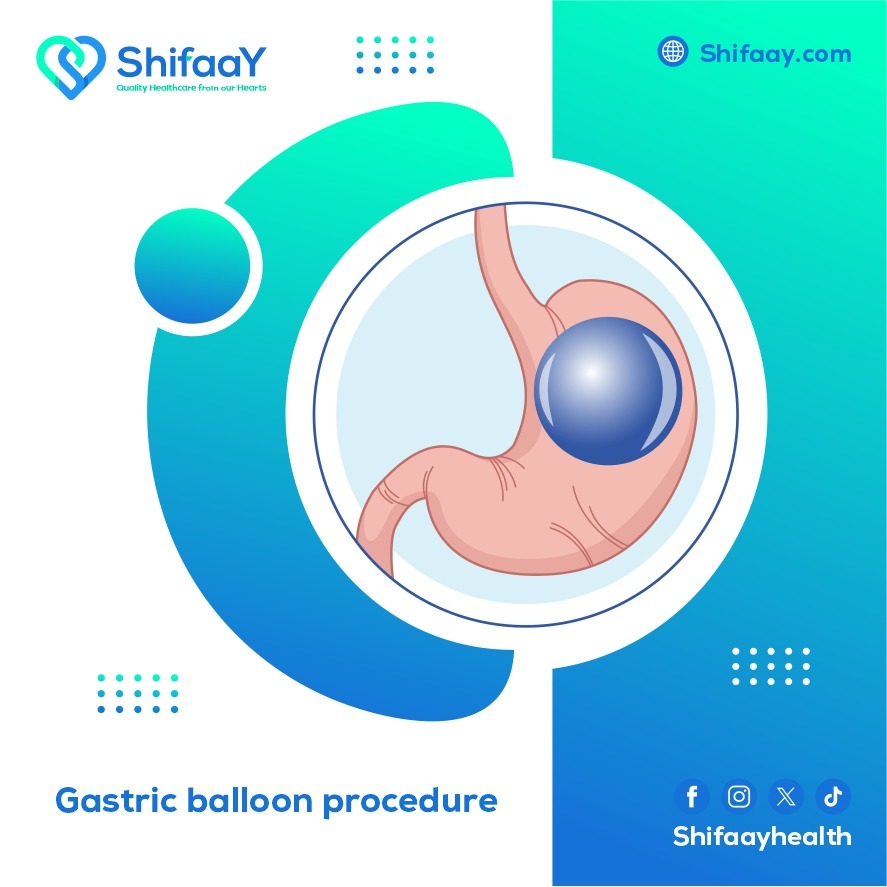
Many people struggle to lose excess weight despite repeated attempts at dieting or exercising, leading some to search for effective medical solutions. Among these solutions, two prominent procedures stand out: the gastric balloon procedure and sleeve gastrectomy. Each has a different mechanism and varying results depending on the patient’s condition and health goals. The gastric balloon procedure is considered non-surgical, whereas sleeve gastrectomy is a permanent surgical intervention, making it crucial to compare the two methods in terms of effectiveness, risks, and costs.
The gastric balloon procedure involves inserting a flexible silicone balloon into the stomach through the mouth, which is then filled with saline solution to occupy space within the stomach. This reduces the amount of food consumed and promotes a feeling of fullness. Gastric balloon procedures usually take less than half an hour and are performed under local anesthesia. They are suitable for individuals with mild to moderate obesity. However, the results are temporary, as the balloon is removed after a period ranging from 6 to 12 months, and the weight loss is generally less compared to surgical methods.
In contrast, sleeve gastrectomy is a surgical procedure that involves removing a large portion of the stomach, reducing its size to about 20% of its original volume. This helps permanently reduce appetite and is suitable for individuals with morbid obesity. It leads to significant weight loss over a short period, but it requires drastic changes in dietary habits and may be associated with risks such as leaks or long-term nutritional deficiencies. Therefore, when comparing the gastric balloon procedure to sleeve gastrectomy, the patient’s health condition and commitment to a healthy lifestyle should be evaluated to ensure the best possible outcome.
Read aslo: What are the symptoms of vasculitis?
How Much Does the Gastric Balloon Procedure Cost?
The cost of the gastric balloon procedure varies by country and medical center, but it generally ranges between $1,000 to $3,000. This often includes initial tests and follow-up care after the procedure. It is always best to contact the clinic directly to know the exact price and available offers.
How Long Does Recovery Take After the Gastric Balloon Procedure?
Typically, patients require two days to a week for complete recovery after the gastric balloon is placed. The patient may experience temporary nausea or cramps in the first few days, but these symptoms gradually subside as the body adjusts.
Can the Gastric Balloon Be Replaced After Removal?
Yes, the gastric balloon can be replaced after removal if the specialist deems it appropriate. Typically, a few weeks are waited between the removal and re-insertion.
How Long Does the Balloon Stay Inside the Stomach?
The gastric balloon remains inside the stomach for a period ranging from 6 to 12 months, depending on the type of balloon used and the treatment plan defined by the doctor. Once this period ends, the balloon must be removed to avoid any complications.

